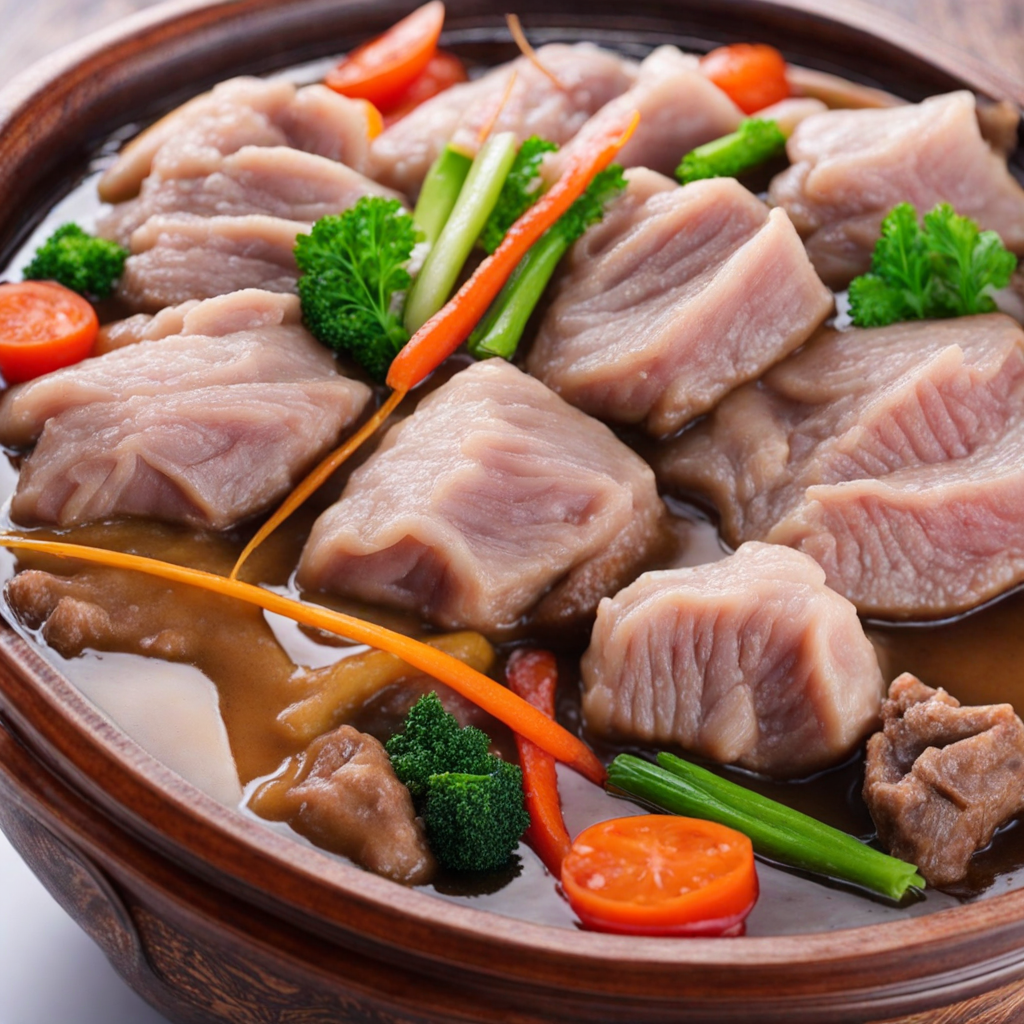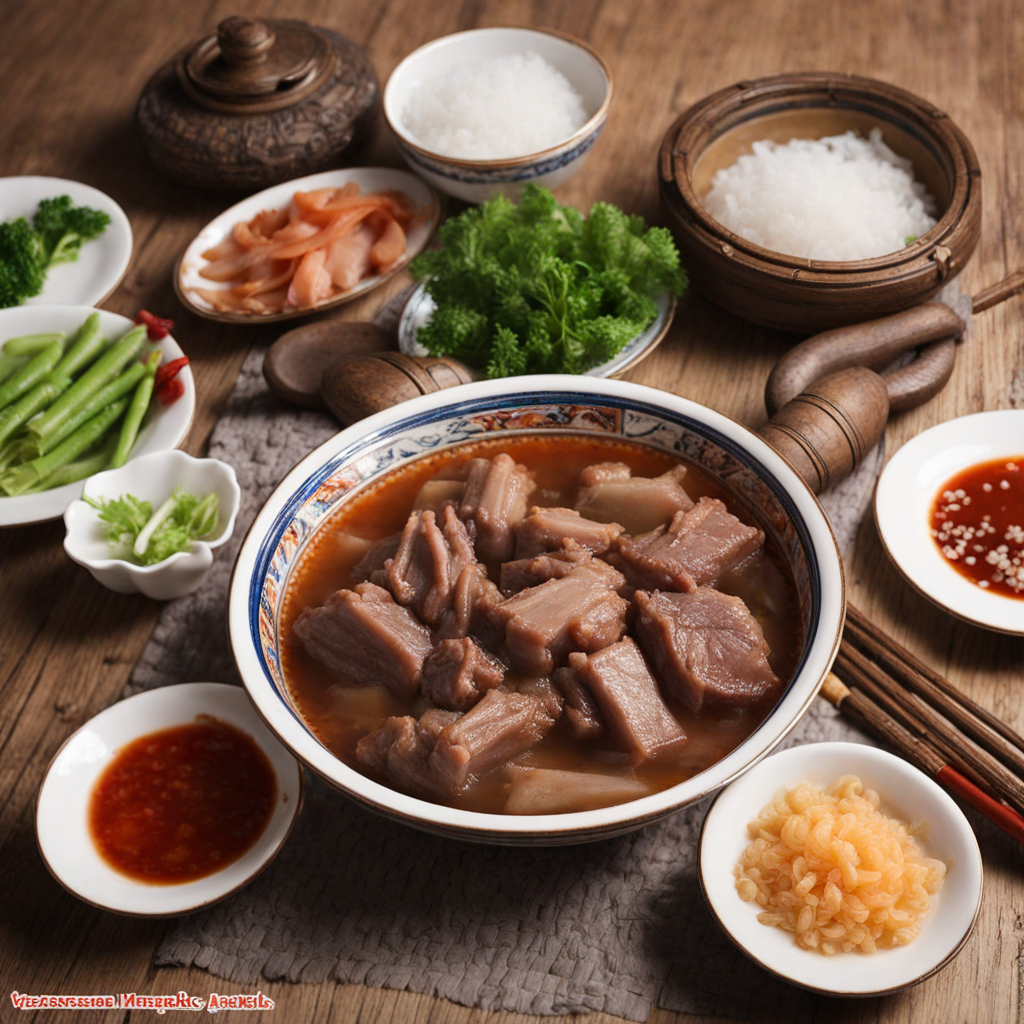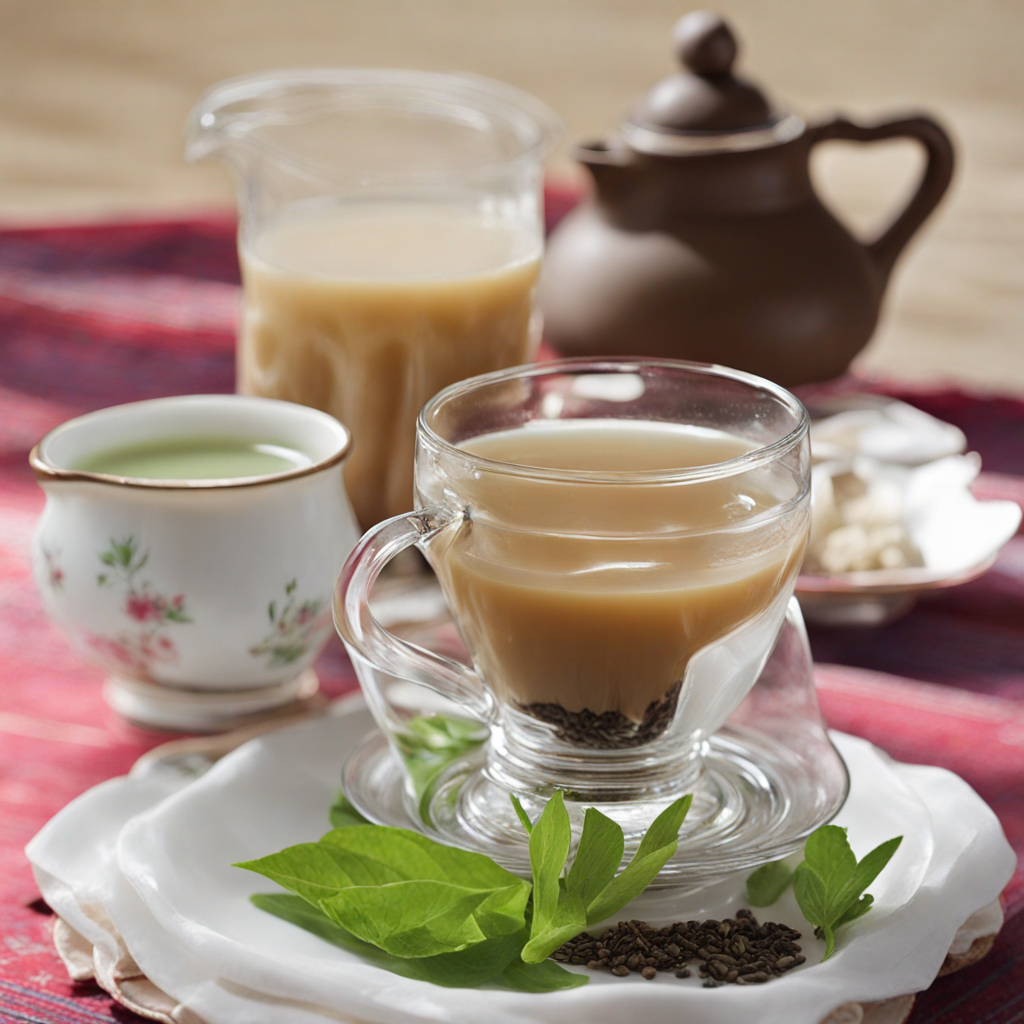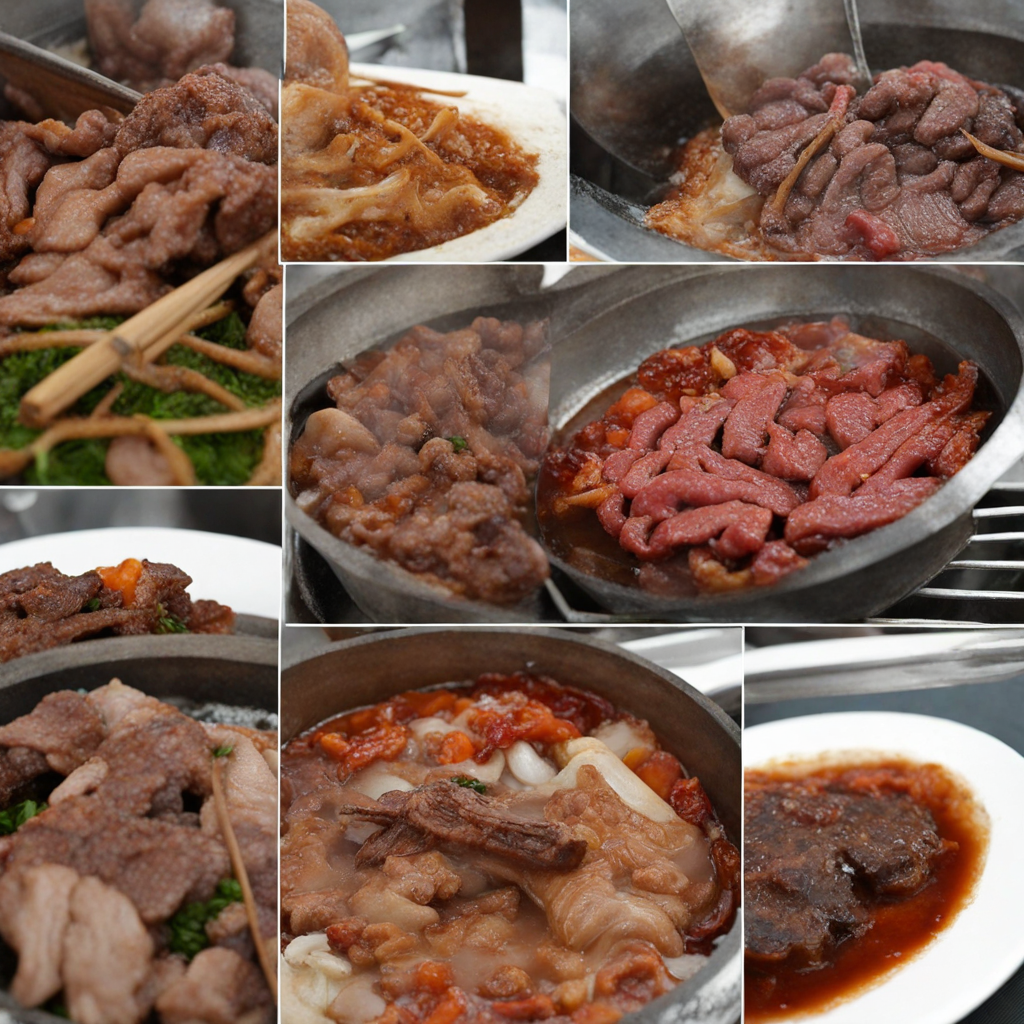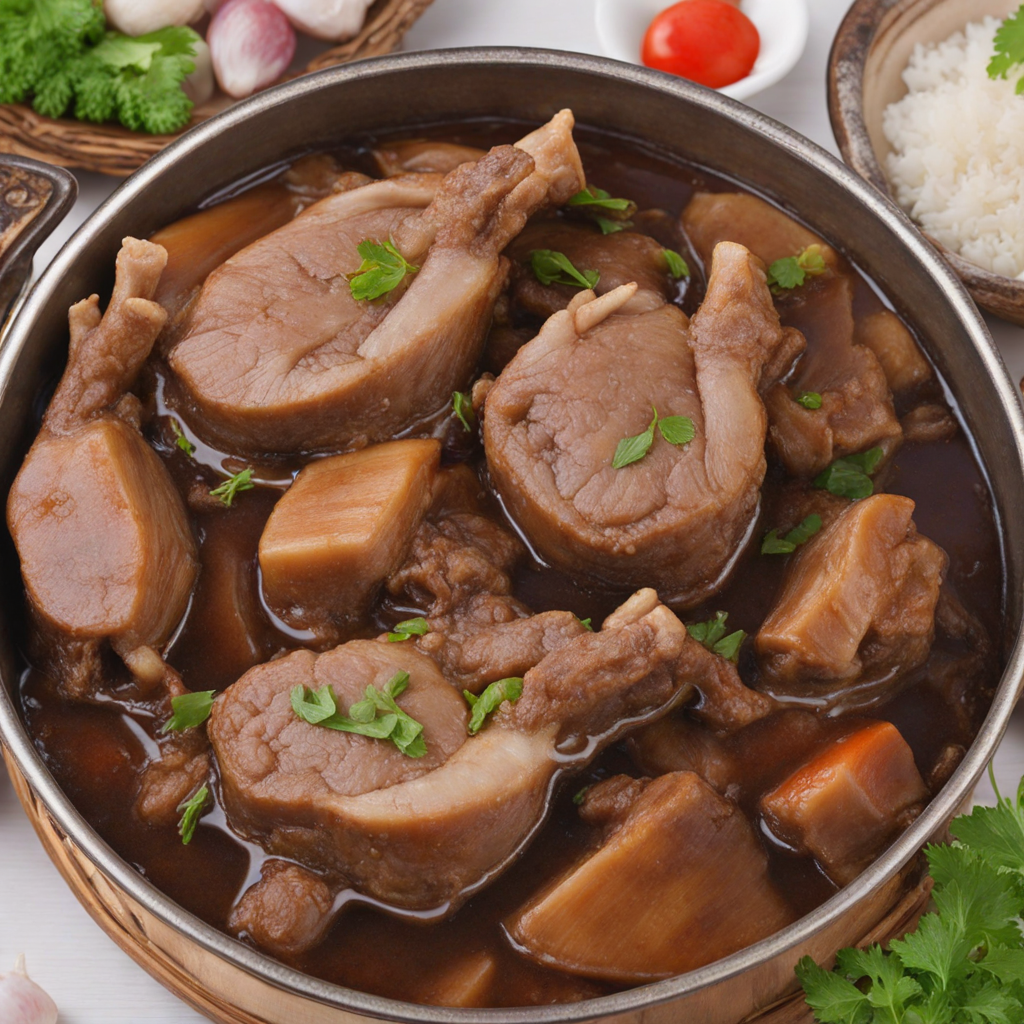Chanasan Makh
Chanasan Makh is a traditional Mongolian dish that beautifully encapsulates the rich culinary heritage of the region. This flavorful meal typically features tender cuts of meat, often lamb or beef, which are marinated with a blend of local spices and herbs. The distinctive aspect of Chanasan Makh is its method of preparation; the meat is usually steamed or boiled, allowing it to retain its natural juices and flavors. This cooking technique results in a dish that is both succulent and aromatic, inviting food enthusiasts to experience the essence of Mongolian gastronomy. Accompanying the meat are various side dishes that enhance the overall experience. Commonly served alongside Chanasan Makh are steamed dumplings filled with vegetables or more meat, as well as a variety of pickled vegetables that add a refreshing contrast to the richness of the main dish. The combination of textures and flavors creates a satisfying meal that is not only hearty but also nourishing, reflecting the nomadic lifestyle of the Mongolian people who rely on the land for sustenance. What truly sets Chanasan Makh apart is its cultural significance and the sense of community it fosters. Traditionally enjoyed during celebrations and gatherings, this dish brings people together, inviting them to share stories and experiences over a hearty meal. As you explore Chanasan Makh, you'll not only delight in its unique taste but also gain insight into the customs and traditions that make Mongolian cuisine so special. Each bite tells a story, connecting you to the vast landscapes and rich history of Mongolia.
How It Became This Dish
The History of Чанасан мах: A Culinary Gem of Mongolia #### Origins of Чанасан мах The dish known as Чанасан мах, or “Chanasan makh” in English transcription, is a traditional Mongolian delicacy that exemplifies the rich culinary heritage of Mongolia, a nation renowned for its nomadic lifestyle and reliance on livestock. The name itself translates to “boiled meat,” which is a fundamental preparation in Mongolian cuisine. This dish is particularly associated with the pastoral nomadic culture, where meat, particularly from sheep and goats, has been a staple food for centuries. Historically, Mongolia's vast grasslands, known as the steppe, provided ideal grazing lands for herds of sheep, goats, camels, and horses. These animals formed the backbone of Mongolian society, providing not only sustenance through their meat but also milk, wool, and leather. The origins of Чанасан мах can be traced back to the time when nomadic tribes settled in the region, adapting their culinary practices to their environment. #### Cultural Significance Чанасан мах is more than just a dish; it embodies the values and traditions of Mongolian culture. In a society where hospitality is paramount, serving Чанасан мах is often a symbol of welcome and respect. It is typically prepared for special occasions, family gatherings, and celebrations, reflecting the communal spirit of the Mongolian people. The act of sharing food, especially a hearty dish like Чанасан мах, strengthens social bonds and fosters a sense of belonging. In Mongolian culture, meat is not merely a source of nutrition but also a revered element of the identity and heritage of the people. Traditionally, the preparation of Чанасан мах involves a communal effort, where family members come together to butcher the animal, cook, and share the meal. This collaborative process highlights the importance of family and community ties. Moreover, meat dishes, including Чанасан мах, are often accompanied by traditional practices and rituals. For instance, during the preparation, specific prayers may be recited to honor the animal, reflecting the deep respect Mongolians have for nature and its resources. This respect extends to the way meat is cooked, with techniques passed down through generations, ensuring that the flavors and traditions are preserved. #### Development Over Time As Mongolia underwent significant changes throughout history, so too did the preparation and consumption of Чанасан мах. The Mongolian Empire, which reached its zenith in the 13th century under the rule of Genghis Khan, facilitated a broader exchange of culinary practices through trade and conquest. As a result, while meat remained the primary focus, various spices and cooking techniques began to influence traditional dishes, enriching the flavors of Чанасан мах. In the modern era, the advent of globalization and urbanization has also impacted how Чанасан мах is prepared and enjoyed. While rural communities continue to adhere closely to traditional methods, urban populations have adapted the dish to suit contemporary tastes and lifestyles. Today, Чанасан мах can be found in various forms, from street food to gourmet restaurant offerings, showcasing the versatility and enduring appeal of this dish. Despite these changes, the essence of Чанасан мах remains rooted in traditional practices. The basic method of preparation has not significantly altered; the meat is still boiled until tender, often seasoned with simple ingredients like salt and pepper, allowing the natural flavors to shine through. However, modern interpretations sometimes incorporate diverse flavors, reflecting the influence of international cuisines. Moreover, as Mongolia seeks to promote its culinary identity on the global stage, Чанасан мах is increasingly featured in food festivals and cultural events, introducing this traditional dish to new audiences. Chefs and culinary enthusiasts are now exploring innovative presentations of Чанасан мах, linking it to contemporary culinary trends while honoring its historical roots. Conclusion Чанасан мах is more than just a dish; it serves as a culinary symbol of Mongolia's rich cultural heritage, embodying the values of hospitality, community, and respect for nature. From its ancient origins rooted in the nomadic lifestyle to its modern interpretations in urban culinary scenes, Чанасан мах reflects the resilience and adaptability of Mongolian cuisine. As Mongolia continues to evolve, so too will the stories and traditions surrounding Чанасан мах. The dish stands as a testament to the enduring spirit of the Mongolian people, a reminder of their deep connection to the land, their livestock, and each other. Whether enjoyed in a traditional yurt on the steppe or in a bustling city restaurant, Чанасан мах invites everyone to partake in a shared history and experience the warmth of Mongolian hospitality.
You may like
Discover local flavors from Mongolia


